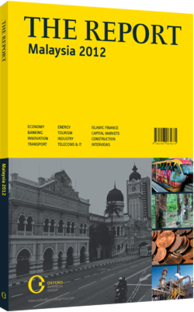Sime Darby: Plantations
THE COMPANY: Sime Darby is a diversified multinational involved in numerous sectors. It was set up in 2007 to facilitate the merger of Golden Hope, Kumpulan Guthrie and Sime Darby, and is now the second-largest company by market cap listed on Bursa Malaysia. Sime Darby Plantation is one of the world’s largest crude palm oil (CPO) producers, with 519,440 ha of planted land bank in Malaysia and Indonesia producing 2.5m tonnes of CPO per year. In 2010 Sime started developing its new 220,000-ha concession in Liberia. In addition to oil palm, Sime also has 7880 ha of rubber. As a vertically integrated palm oil company, Sime has 13 downstream facilities across seven countries involved in CPO refining, oleochemicals and biodiesel production. Sime Darby Industrial is the world’s fifth-largest Caterpillar dealer operating in 10 countries across the Asia-Pacific region. It is involved in the sale of new machines, engines and used equipment, as well as the rental of machines and provides a full range of after-sales services. Sime Darby Motors is one of the world’s largest BMW dealers operating in eight countries. Other brands distributed include Mini, Rolls Royce, Ford, Hyundai, Land Rover, Porsche and Peugeot in passenger vehicles, as well as Hino, UD Nissan, Mitsubishi Fuso, Mack and Renault in commercial vehicles. Sime Darby Property is a leading township developer in Malaysia with a 16,800-acre land bank. Over the years this division has built 10 townships and operates several commercial, hospitality and leisure assets in Malaysia. Sime also has assets in Singapore, Vietnam, Australia and the UK. Sime Darby Energy & Utilities’ core businesses are in power, with 590-MW capacity in Malaysia and Thailand; engineering services, offering systems integration solutions in Southeast Asia; ports and logistics via four ports with annual throughput of 34.5m tonnes in Shandong province, China; and water management, with two water treatment plants and a flatland reservoir in China. Sime Darby Healthcare operates two, 613-bed hospitals and a medical and surgical day-care centre.
DEVELOPMENT STRATEGY: The plantation division was the largest contributor to profits in fiscal year (FY) 2012 (year-end: June), with 55%. Sime aims to grow this division by planting up its Liberian land bank. By the end of FY 2012 Sime had planted 4000 ha and intends to plant an additional 6000 ha by the end of FY 2013. In the downstream segment Sime continues to expand with its recently completed 660,000-tonne refinery in Malaysia and a new 825,000-tonne refinery in Indonesia, which is due for completion by year-end 2012. Sime’s industrial division, comprising 23% of profits, continues to leverage on its exposure to the mining, logging and construction sectors, as well as its recently completed acquisition of Bucyrus International, which will give it a complete range of surface and underground mining equipment. China continues to be at the forefront of Sime’s growth strategy for this division. Sime’s motor division, comprising 12.5% of profits, aims to expand in the Asia-Pacific region by strengthening its assembly capacity, expanding after-sales and used-car business and focusing on markets in South-east Asia.
The property division, comprising 7.5% of profits, aims to establish one new township every two years and one niche development every year. It will pursue strategic alliances for the long-term target of generating 20% of revenue from overseas. In July 2012 Sime entered into a joint venture with two other partners to acquire the 39-acre Battersea Power Station in London for £400m ($639.4m), which will be developed into an £8bn ($12.8bn) mixed-development project. As for Sime’s Energy & Utilities, growth in the next five years is targeted to come from its China port. The healthcare division is also set to expand with the opening of its fourth health care facility in 2013. Sime’s net profit has grown by a compound annual growth rate of 16.9% over the last four years, while its strong foothold in its core businesses will ensure stable earnings. Its balance sheet is also in a positive position, with net gearing of just 18% as of the end of FY 2012, while return on equity over the last five years has averaged some 15%.
You have reached the limit of premium articles you can view for free.
Choose from the options below to purchase print or digital editions of our Reports. You can also purchase a website subscription giving you unlimited access to all of our Reports online for 12 months.
If you have already purchased this Report or have a website subscription, please login to continue.

